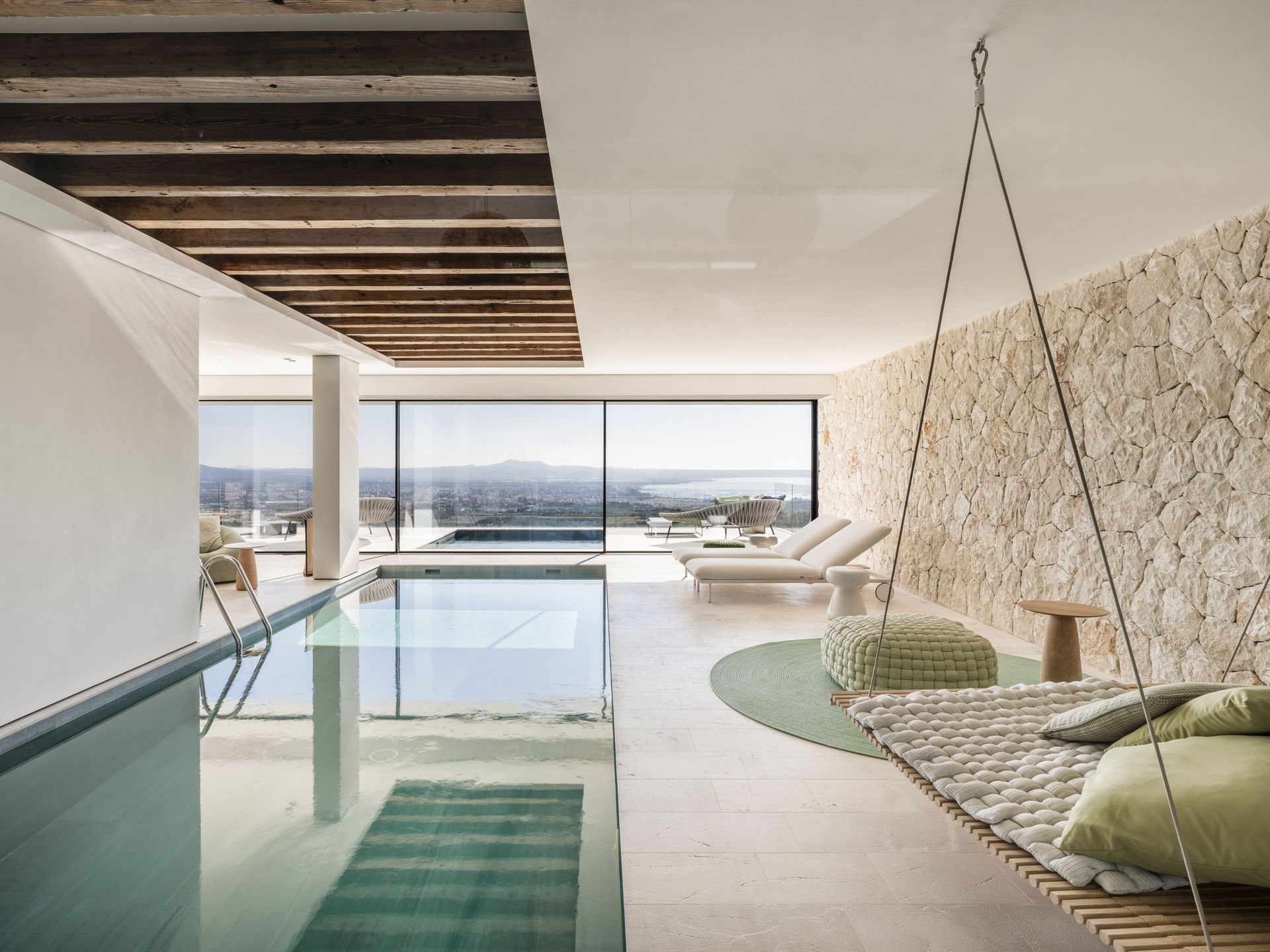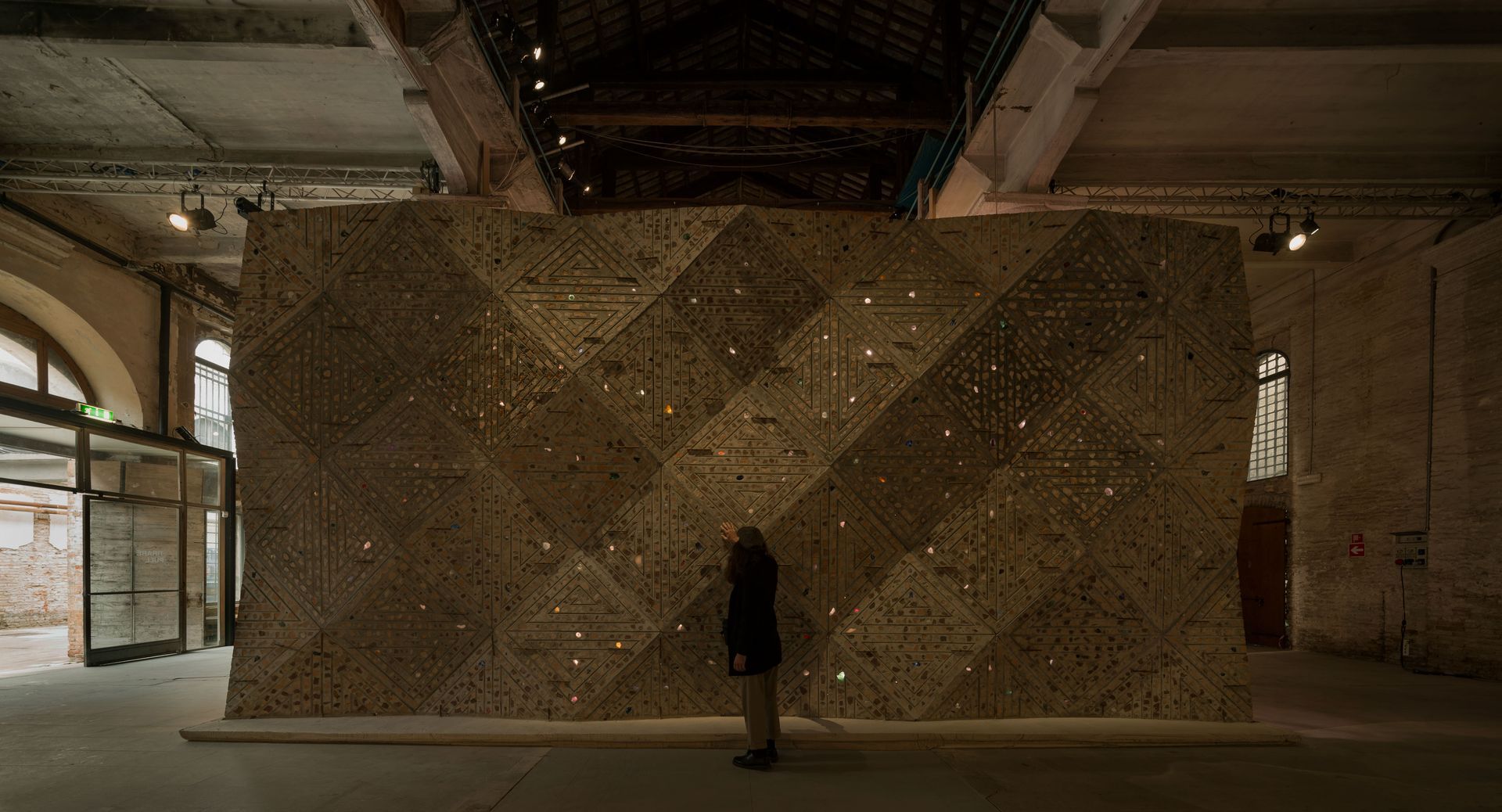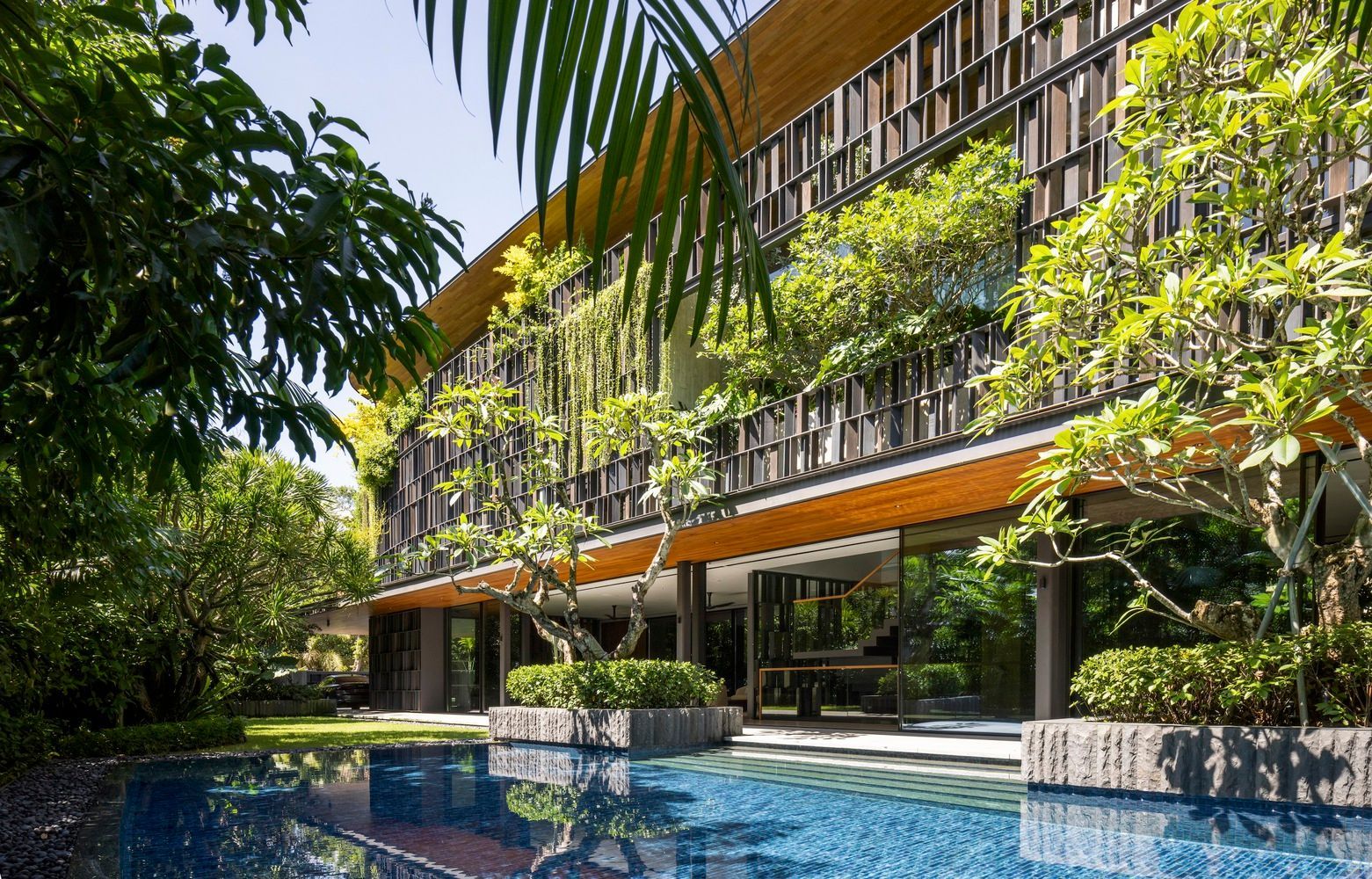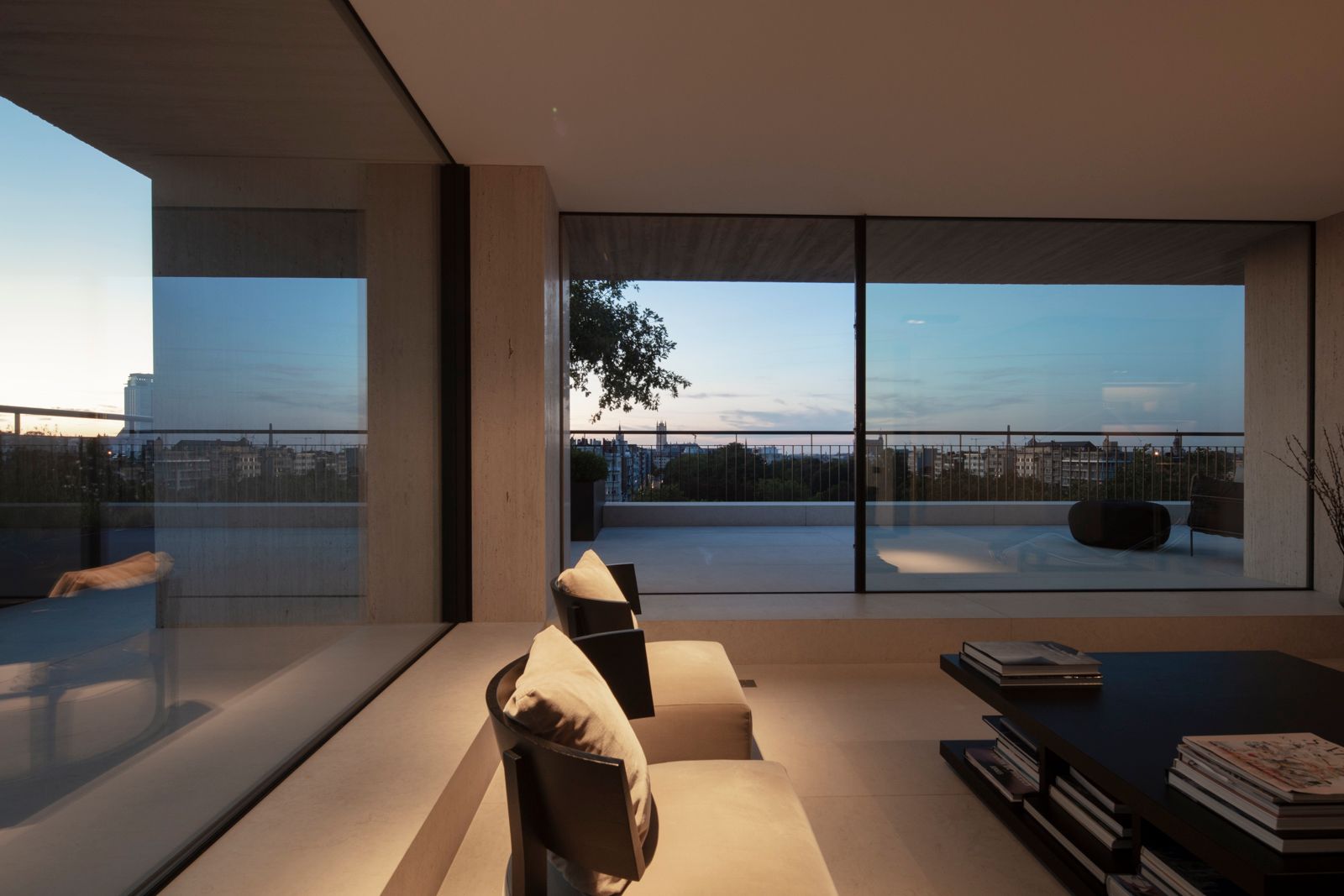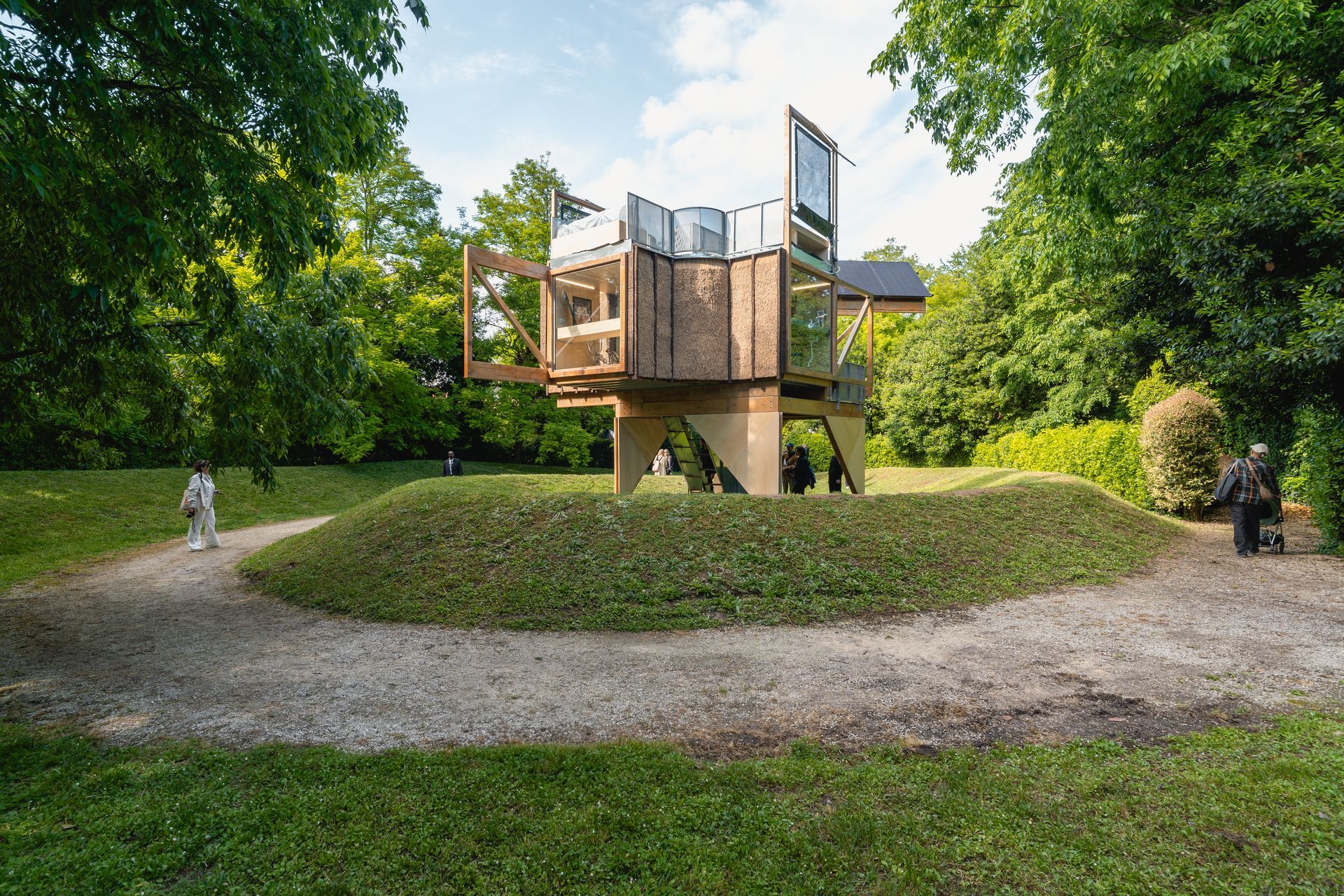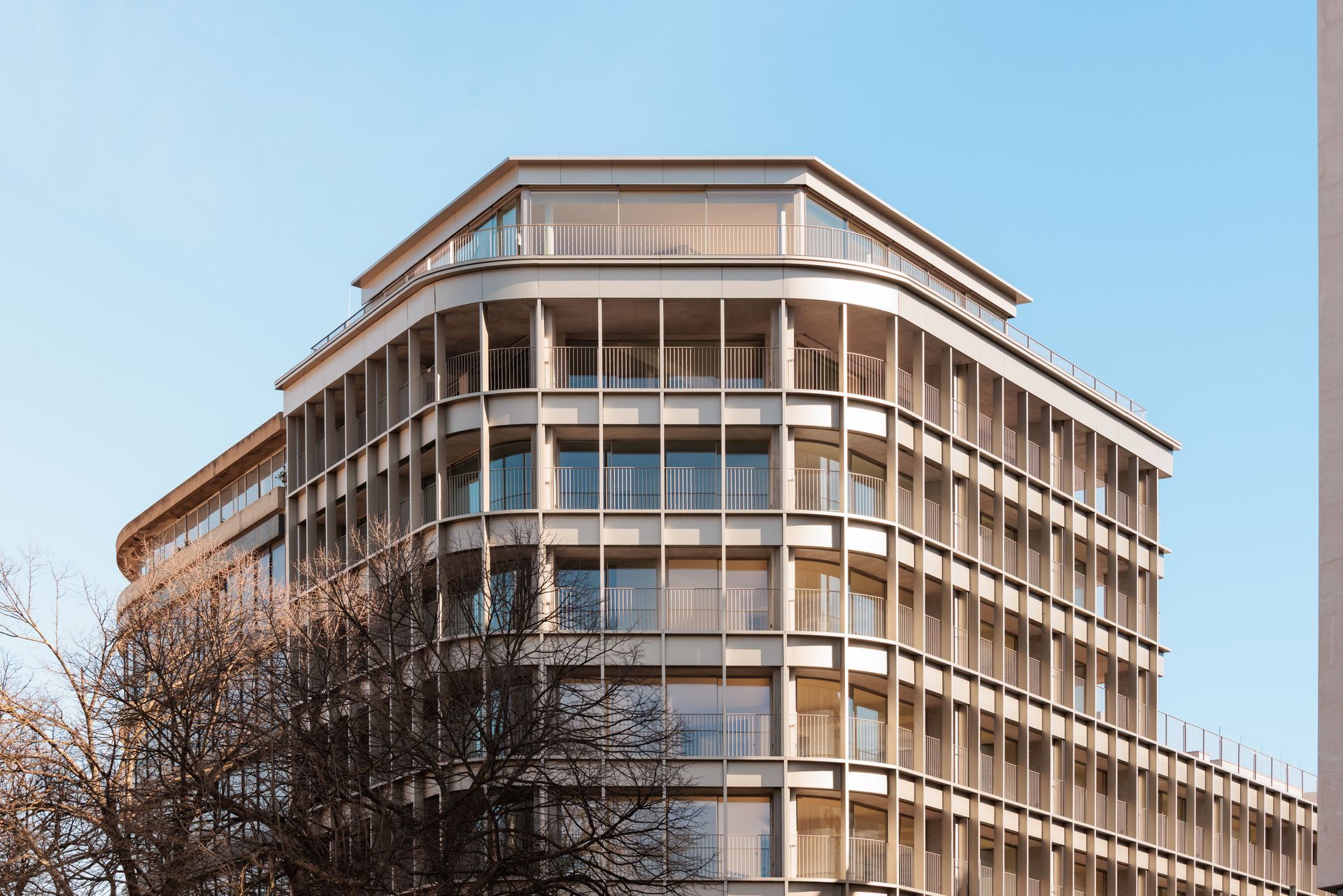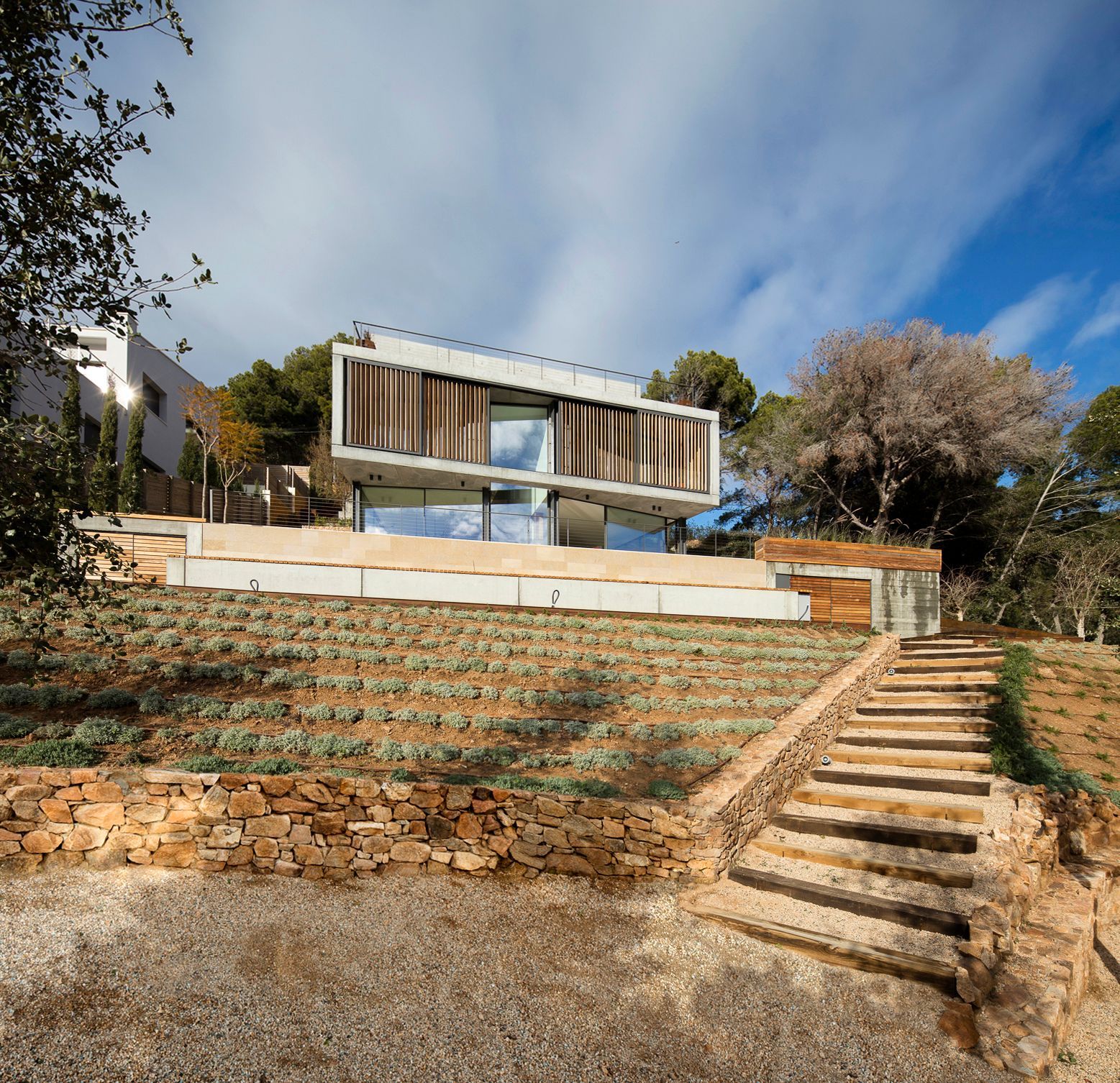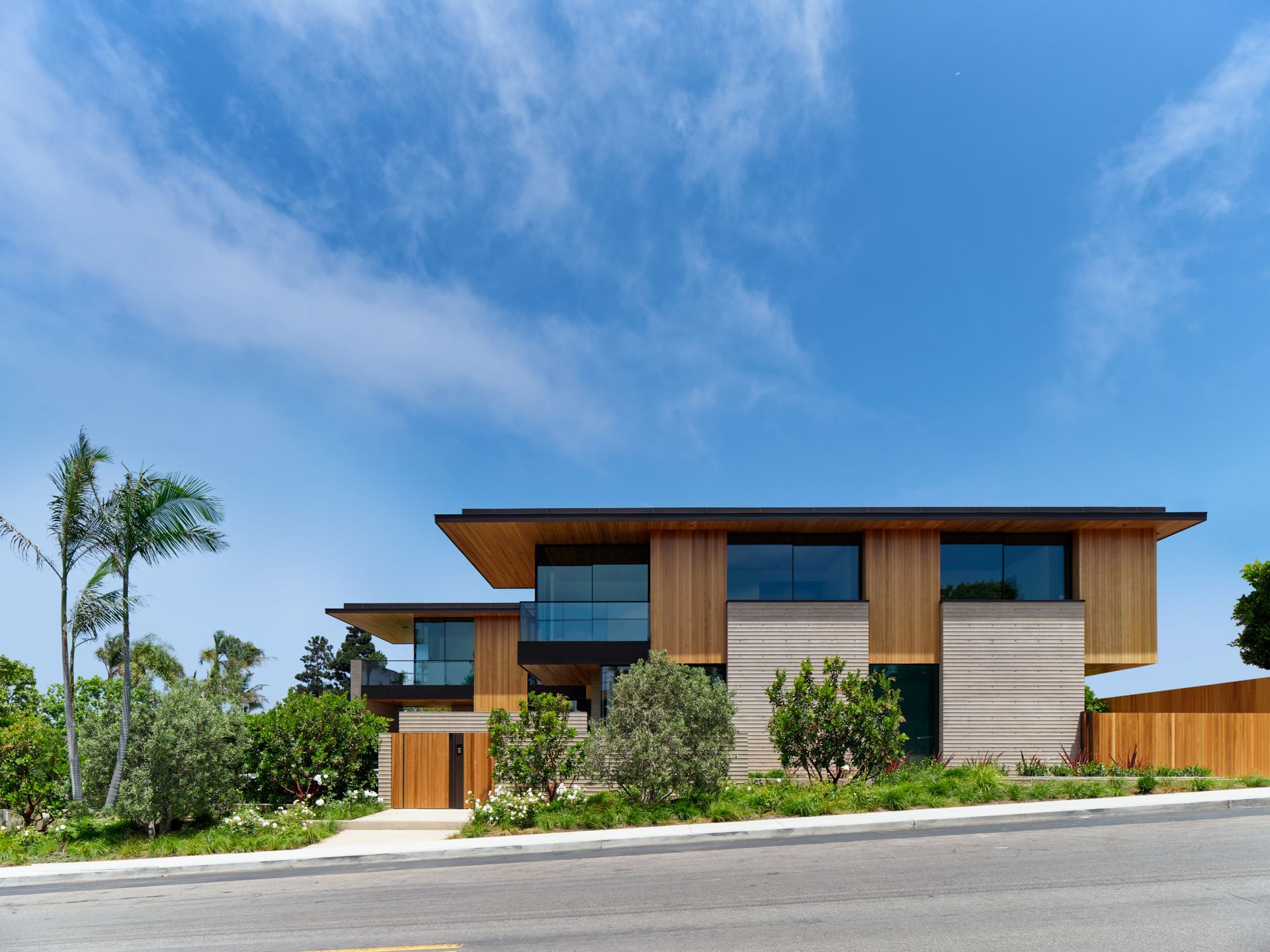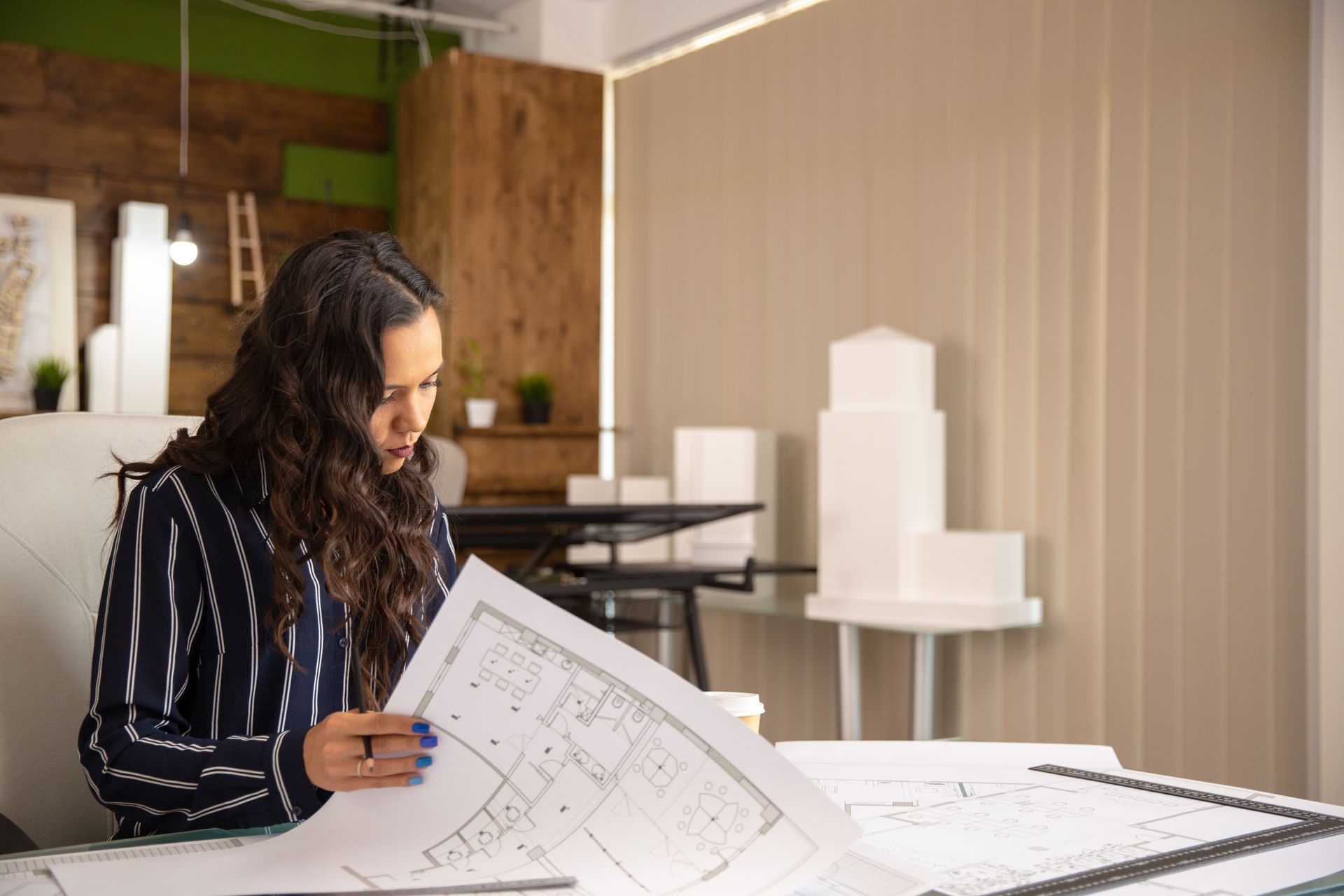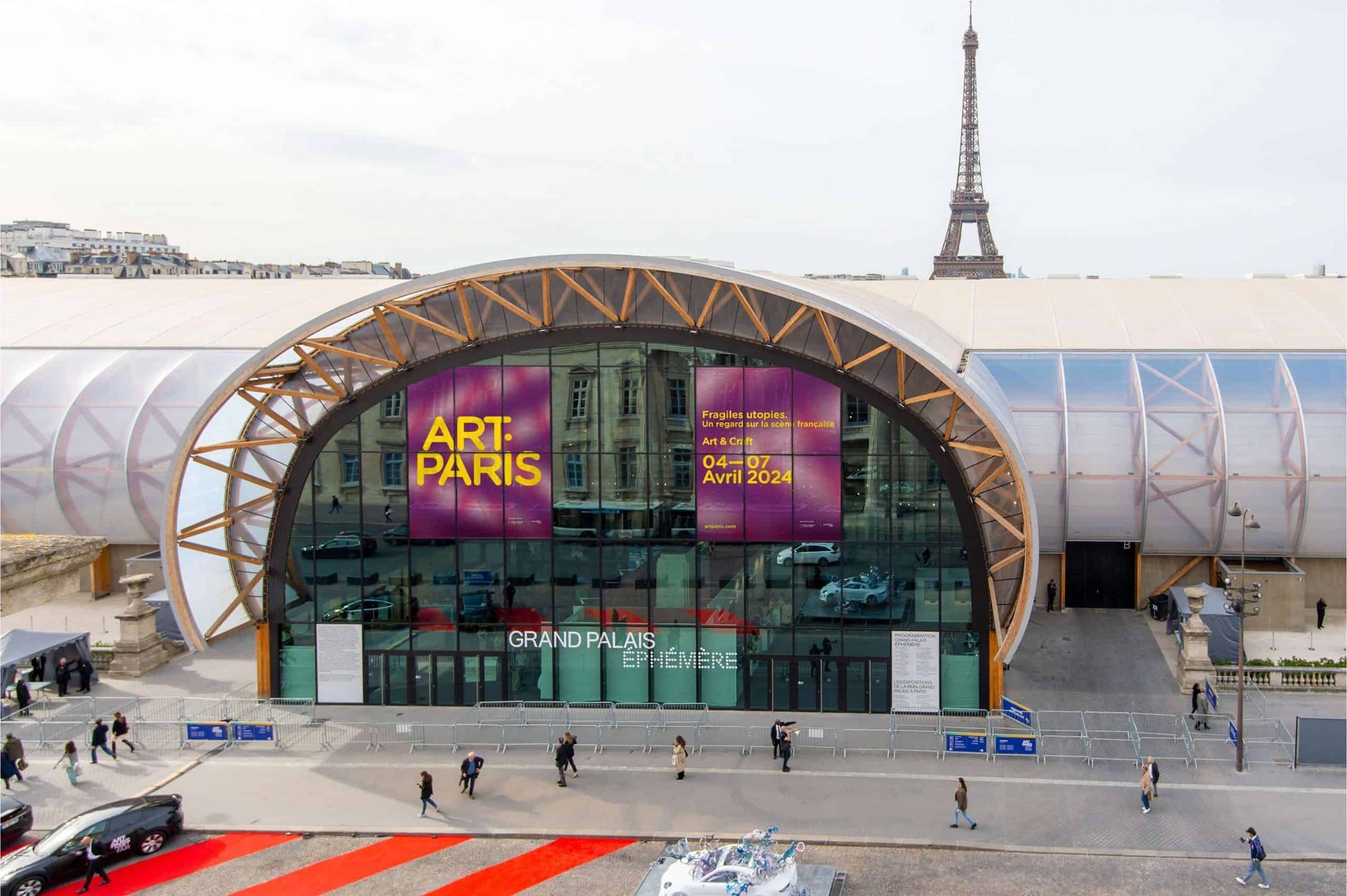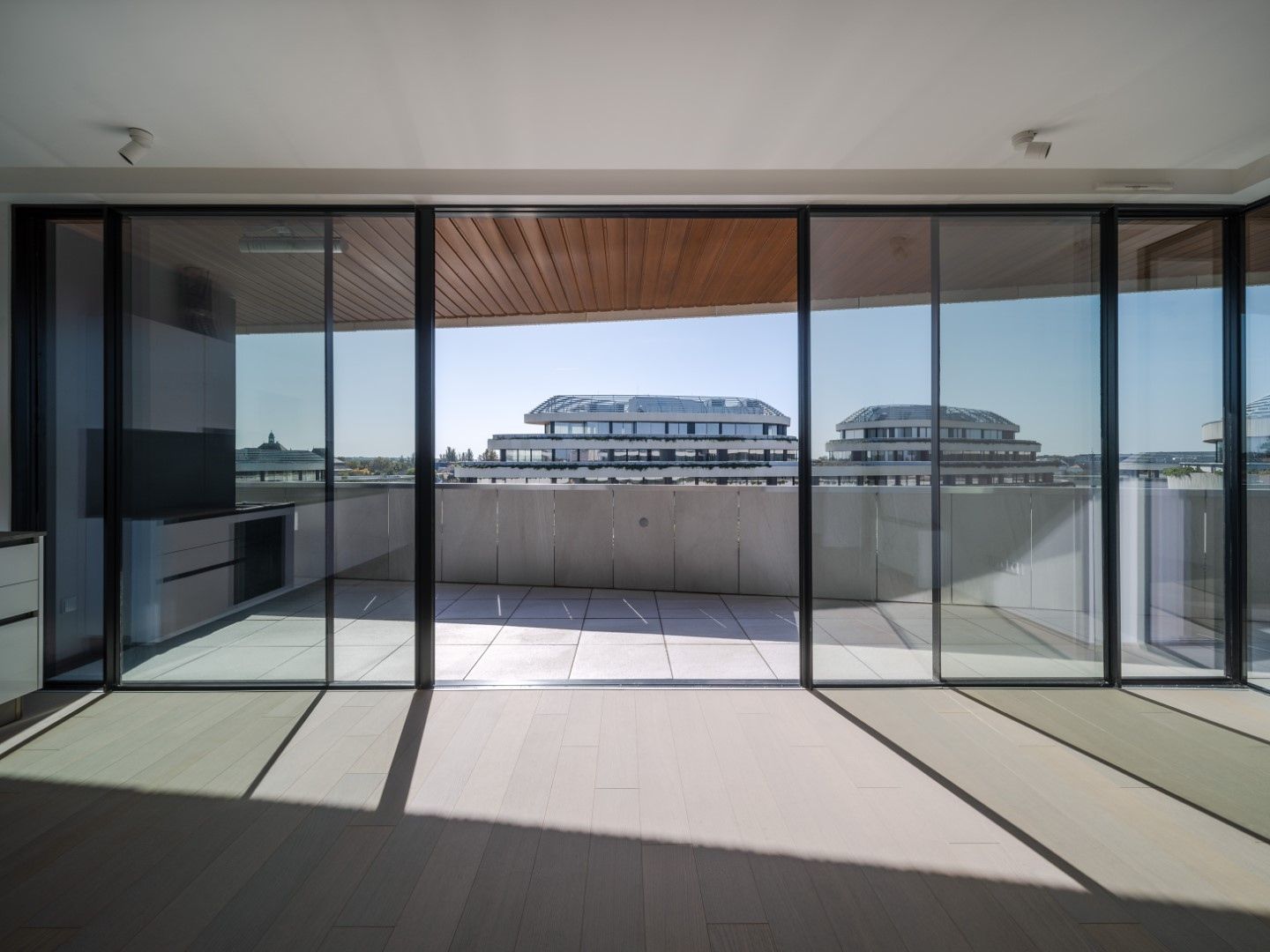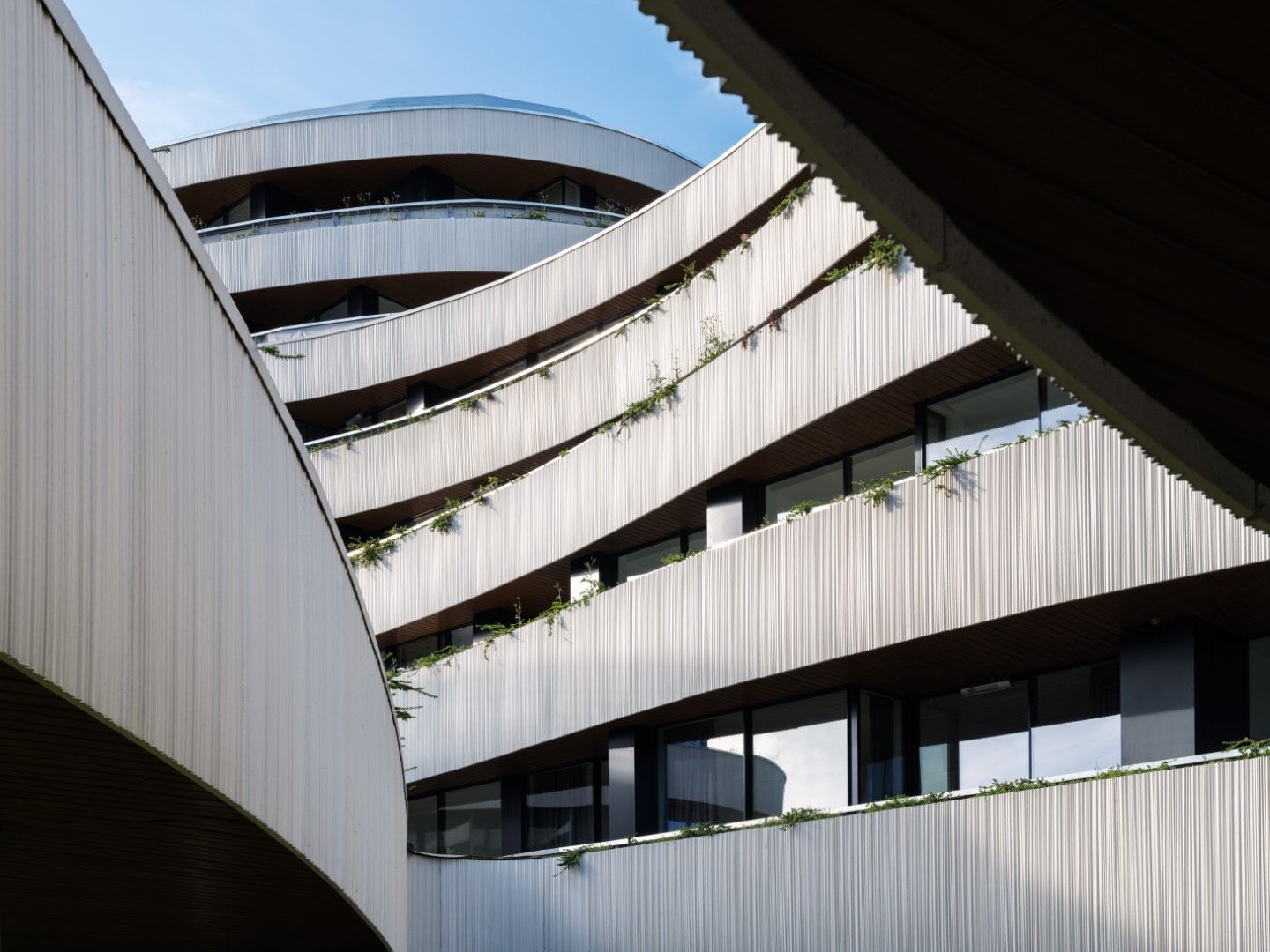Exploring Cedrus Liget: A Futuristic Fusion of Architecture and Nature
Cedrus Liget, located in Szeged, Hungary, redefines architectural boundaries with its visionary design by Bara Akos Daniel (B.A.D) and cutting-edge glass enclosures by OTIIMA. Comprising twelve interconnected buildings, the complex seamlessly integrates with the surrounding natural landscape, creating an organic ensemble that celebrates the harmony between architecture and nature.
© Bujnovszky Tamás
At Cedrus Liget, continuity is not just a concept but a tangible experience. Oval-shaped buildings establish a fluid dialogue with the environment, while expansive glazed surfaces dissolve the boundaries between inside and out. This dynamic interplay of light and space creates a sense of continuity throughout the complex, inviting residents to immerse themselves in the beauty of their surroundings.
Central to Cedrus Liget's architectural vision is its extensive use of glass, with a staggering 27,000 m2 of windows. This ambitious endeavor not only sets a new standard for architectural innovation but also underscores the project's commitment to transparency and openness. Bara Akos Daniel's meticulous design ensures that each building blends seamlessly with the natural landscape, creating a futuristic aesthetic that is both captivating and timeless.
Read Also- Urban Oasis: Preradoviceva Project by Souto de Moura in Zagreb
© Bujnovszky Tamás
Behind the sleek facade of Cedrus Liget lies the technological prowess of OTIIMA's glass enclosures. Designed to blend in with the architecture, these high-tech installations provide a seamless transition between interior comfort and outdoor serenity. With features such as advanced security, energy efficiency, and intuitive operation,
OTIIMA's 38 Plus windows embody the perfect union of form and function, enhancing the living experience for Cedrus Liget residents.
The Cedrus Liget project serves as a compelling example of how architectural innovation can co-exist in harmony with a concern for the environment. As the boundaries between nature and the built environment continue to dissolve, Cedrus Liget demonstrates the transformative power of sustainable design. Through its seamless integration of advanced technologies and natural elements, this visionary project invites us to rethink the way we inhabit our urban spaces, fostering a future where architecture not only reflects our values, but also nurtures the world around us.
